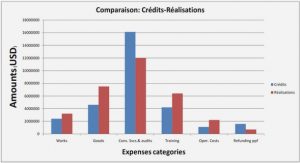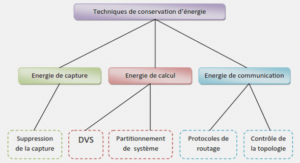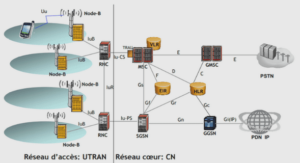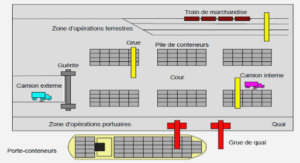Root pass geometry and macrostructure
Experimental procedures :
CA6NM martensitic stainless steel plates with dimensions of 150 mm in length × 75 mm in width × 10 mm in thickness were extracted from a cast turbine runner blade that had a thickness range of 50 – 101 mm and a chemical composition as given in Table 2-1. It is noteworthy that prior to machining, the CA6NM turbine blade runner was heat treated in three stages: (1) normalization by heating at a rate of 60 K/hr (60°C/hr) to 1073 K (800°C) and soaking at this temperature for 8 hours, followed by heating at a rate of 25 K/hr (25°C/hr) to 1303 K (1030°C) and soaking at this temperature for 27 hours, (2) air cooling to a temperature below the martensite finish temperature (Mf) of 363 K (90°C), and (3) tempering by heating at a rate of 36 K/hr (36°C/hr) to 913 K (640 °C) and soaking at this temperature for 27 hours, followed by cooling at a rate of 25 K/hr (25°C/hr). The CA6NM plates were then prepared to form a Y-groove shape butt joint with a bevel angle of 30º and a root face size of 5 mm. Just before HLAW, the CA6NM plates were ground and cleaned with acetone and then fixed within a clamping device with a root opening (gap size) of ~0.2 mm. AWS ER410NiMo filler wire with a diameter of 1.14 mm and a chemical composition as given in Table 2-1 was used for the HLAW trials. A Fronius Trans Pulse Synergic 4000 CMT GMAW power supply was coupled with a IPG photonics 5.2 kW continuous wave (wavelength of 1070 nm) solid-state Yb-fiber laser equipped with a collimating lens of 200 mm, a focal lens of 300 mm and a fiber diameter of 0.2 mm, which produced a nominal focusing spot diameter of ~ 0.30 mm (with an actual measurement of 0.33 mm). The laser beam was focused at 2.5 mm under the top surface of the workpiece, while maintaining a laser-arc distance of 2 mm. During welding, the laser head was inclined 5° from the vertical plane perpendicular to the welding direction to avoid any damage from laser beam reflection. The angle between the electrode axis and the workpiece surface was 45°. To protect the molten weld pool during welding, the top surface of the workpiece was shielded using a mixture of 96% argon and 4% oxygen, fed by the MAG (metal active gas)/MIG (metal inert gas) torch nozzle at a flow rate of 23.6 l/min, while the bottom surface was shielded using argon at a flow rate of 9.5 l/min. In the present work, the HLAW trials were conducted in laser leading mode and optimization of the process was centered primarily on the welding speed. Table 2-2 lists the weld process parameters (laser power, welding speed, WFR, arc voltage and current) used in this study. The WFR (wire feed rate) was calculated according to the volume required to fill the groove.
Results and discussion:
Weld bead geometry:
Figure 2-2 illustrates the joint cross-sections of two welds assembled at a low welding speed of 0.5 m/min using laser powers of 4.2 kW and 5.2 kW. The formation of periodic drops at the root surface, which is called root humping [8] or sagging [1], shows the instability of the HLAW process at this welding speed. This phenomenon can be attributed to a high heat input, low surface tension and gravity [8], as will be discussed later. With increasing welding speed, fully penetrated welds with good surface characteristics (crown and root) were obtained with HLAW, as shown in Figure 2-3a-c. The FZ area in these welds decreased by ~18% with increasing welding speed from 0.75 m/min to 1.2 m/min and the corresponding weld bead width decreased by ~13%, which can be attributed to a reduction in the heat input. This relatively low heat input process with a high welding speed and associated high productivity is important for manufacturing industries.
Experimental :
Cast ASTM A743 grade CA6NM was received in plate form with a chemical composition as listed in Table 3-1. The 10-mm thick as-received plates were extracted from a newly cast CA6NM turbine runner blade and were heat treated as follows: (1) normalizing by first heating at a rate of 60 K/hr (60 °C/hr) to 1073 K (800 °C) and holding for 8 hrs followed by heating at a rate of 25 K/hr (25 °C/hr) to 1303 K (1030 °C) and holding for 27 hrs, (2) air cooling to a temperature below the martensite finish temperature (Mf ≈ 363 K (90 °C)), and (3) tempering by heating at a rate of 36 K/hr (36 °C/hr) to 913 K (640 °C) and holding for 27 hrs followed by cooling at a rate of of 25 K/hr (25 °C/hr). The CA6NM plates were then machined into coupons of 150 mm × 75 mm × 10 mm for the HLAW trials.
The laser equipment consisted of an IPG photonics 5.2 kW continuous wave solid-state Ybfiber laser attached to an ABB robotic mounting arm. A collimating lens of 200 mm, a focal lens of 300 mm and a fiber diameter of 0.20 mm were employed to produce a nominal focusing spot diameter of 0.30 mm. The defocusing distance was 2.5 mm under the workpiece top surface and the laser head was inclined 5° from the vertical position during welding. A Fronius Trans Pulse Synergic 4000 CMT (Cold Metal Transfer) GMAW power supply was used in tandem with this laser system. The top surface of the workpiece was shielded using a mixture of 96% argon and 4% oxygen at a flow rate of 23.6 l/min that was fed through a GMAW nozzle, while the bottom surface was shielded using 100% argon at a flow rate of 9.5 l/min.
A single-pass HLAW process was developed to obtain full penetration in 10-mm thick CA6NM plates with a Y-groove shape butt joint having a bevel angle of 30º. The root size was 5 mm with a gap size of about 0.2 mm. The chemical composition of the AWS ER410NiMo filler wire (φ 1.14 mm) that was used is given in Table 3-1. As indicated in Table 3-2, HLAW was conducted at different welding speeds and the highest accessible laser power in “laser leading” mode. In accordance with recommended guidelines, post-weld tempering was performed on the welded assemblies according to ASME Section IX at a holding temperature of 873 K (600 °C) for 1 hr at heating and cooling rates of 50 K/hr (50 °C/hr).
Material and experimental procedures :
The CA6NM base metal (BM) plates used in this study were 10 mm thick, 150 mm long and 75 mm wide. The chemical composition is listed in Table 4-1. The plates were sectioned from a cast turbine runner blade that had been heat-treated according to the following procedures: (1) normalizing by first heating at a rate of 60°C/hr to 800°C and holding for 8 hrs, followed by heating at a rate of 25°C/hr to 1030°C and holding for 27 hrs, (2) air cooling below the α′ finish temperature (Mf) of 90°C, and (3) tempering by heating at a rate of 36°C/hr to 640°C and holding for 27 hrs, followed by cooling at a rate of 25°C/hr to room temperature. It is worth mentioning that the tempering temperature exceeded the maximum temperature of 620°C specified by ASTM743 for CA6NM and that according to Thibault et al. [17] a tempering temperature above 630°C would result in the transformation of some of the reversed γ into untempered α′ upon cooling.
Results and discussion :
The transverse section of a fully penetrated joint assembled at a laser power of 5.2 kW and a welding speed of 1.0 m/min is shown in Figure 4-2a. The macrostructures of the different HAZs near the fusion boundary are shown in Figure 4-2b in correlation with the cooling path for a 13% Cr and 4% Ni pseudo-binary section of the Fe-Cr-Ni equilibrium ternary phase diagram [19], which is very similar to the chemistry of the CA6NM alloy. Based on this phase diagram, five different HAZs can be predicted in the as-welded condition, although the first high temperature HAZ (HAZ1) is usually undistinguishable from the fusion boundary. The other four HAZs (HAZs 2-5), after post-weld tempering treatment, can be identified according to their microhardness profile [11, 20]. The microstructural evolutions in these HAZs and the FZ are the central topic of the present work, as discussed below.
|
Table des matières
INTRODUCTION
CHAPTER 1 LITERATURE REVIEW
1.1 Hybrid laser-arc welding principle
1.2 Different parameters in hybrid laser arc welding
1.2.1 Distance between laser and arc
1.2.2 Relative position of the heat sources
1.3 Hybrid laser-arc welding of thick plates
1.4 Low carbon 13%Cr-4%Ni martensitic stainless steels
1.4.1 Different phases in low carbon martensitic stainless steels
1.4.1.1 Martensite
1.4.1.2 Delta ferrite
1.4.1.3 Austenite
1.4.2 Welding metallurgy of low carbon 13%Cr 4%Ni martensitic stainless steels
1.5 Summary
CHAPTER 2 HYBRID LASER-ARC WELDING OF 10-MM THICK CAST MARTENSITIC STAINLESS STEEL CA6NM: AS-WELDED MICROSTRUCTURE AND MECHANICAL PROPERTIES
2.1 Introduction
2.2 Experimental procedures
2.3 Results and discussion
2.3.1 Weld bead geometry
2.3.2 Weld defects
2.3.3 Microstructures
2.3.3.1 Base metal
2.3.3.2 Fusion zone
2.3.3.3 Heat-affected zones
2.3.4 Mechanical properties
2.3.4.1 Microindentation hardness
2.3.4.2 Tensile properties
2.3.4.3 Charpy impact properties
2.4 Conclusions
CHAPTER 3 POST-WELD TEMPERED MICROSTRUCTURE AND MECHANICAL PROPERTIES OF HYBRID LASER-ARC WELDED CAST MARTENSITIC STAINLESS STEEL CA6NM
3.1 Introduction
3.2 Experimental
3.3 Results and discussion
3.3.1 Macrostructure
3.3.2 Microstructure
3.3.3 Microindentation hardness
3.3.4 Tensile strength
3.3.5 Charpy impact property
3.4 Conclusions
CHAPTER 4 PHASE STRUCTURES AND MORPHOLOGIES OF TEMPERED CA6NM STAINLESS STEEL WELDED BY HYBRID LASER-ARC PROCESS
4.1 Introduction
4.2 Material and experimental procedures
4.3 Results and discussion
4.3.1 Base metal
4.3.2 Fusion zone
4.3.3 Heat affected zone microstructure
4.3.4 Microindentation hardness
4.4 Conclusions
CHAPTER 5 TECHNICAL CHALLENGES IN NARROW-GAP ROOT PASS WELDING DURING TANDEM AND HYBRID LASER-ARC WELDING OF A THICK MARTENSITIC STAINLESS STEEL
5.1 Introduction
5.2 Experimental
5.3 Results and discussion
5.3.1 Thermal cycles
5.3.2 Weld macrographs and defects
5.3.3 Microstructure
5.4 Conclusions
CHAPTER 6 HYBRID/TANDEM LASER-ARC WELDING OF 25-MM THICK 415SS PLATES WITH A NARROW-GAP GROOVE CONFIGURATION
6.1 Introduction
6.2 Experimental procedures
6.3 Results and discussion
6.3.1 Thermal cycles
6.3.2 Root pass geometry and macrostructure
6.3.3 Defects
6.3.1 Tensile tests
6.3.2 Charpy impact property
6.4 Conclusions
SUMMARIES
RECOMMENDATIONS FOR FUTUR WORK
LIST OF BIBLIOGRAPHICAL REFERENCES
![]() Télécharger le rapport complet
Télécharger le rapport complet






